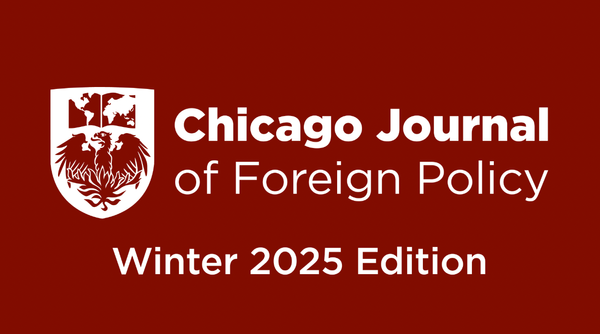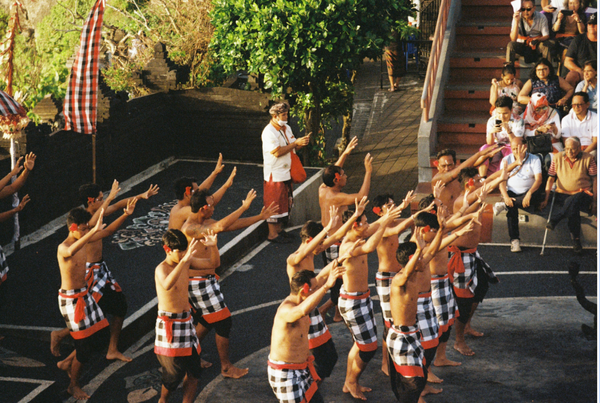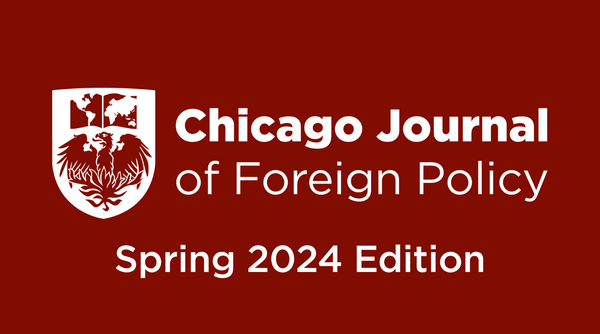UNDRIP: The Recognition of Indigenous Peoples through Acknowledging the Past, Present and Future

by CARSON SMITH, Stanford University ’19
In 2007, the United Nations Declaration on the Rights of Indigenous Peoples acted as the first signed piece of formal, international policy to provide indigenous peoples worldwide with a set of specific rights, including self-determination, economic development, governance, the protection of cultural practices, and land rights. Although the document was non-legally binding, it currently stands as the model of the freedoms and rights that nations worldwide owe their aboriginal people. UNDRIP provides opportunities for indigenous peoples to have themselves and their rights recognized through acknowledging their historical struggles, promoting their interaction with modern-day politics as nations within themselves, and supporting them in preparing for the future of their peoples. This essay will first uncover how such international legislation has provided the opportunity to address atrocities against indigenous peoples and how this specifically acts as a means of recognizing indigenous peoples and the rights that have been historically denied to them. Then, the essay will turn to the statutes in UNDRIP, which call for indigenous political recognition, specifically through freedoms of speech and media and a capacity for these people to adhere to their own governing structures. Finally, this essay will close on a short discussion of how these types of legislation are also supporting the future recognition of indigenous peoples through promoting the education and cultural development of indigenous children.
Historical Recognition
Policies such as UNDRIP provide indigenous peoples with a means of having their histories and pasts internationally recognized, when historically these perspectives have been ignored. Often, the voices of indigenous peoples have been erased through the retelling of these histories and societies through the lens of the colonizer. For example, especially in the past two centuries, anthropologists have described indigenous communities without a grounded understanding of these societies thereby leading to romanticized and imperfect notions of these cultures, and these records are the ones that have stood the test of time; largely, these notions of indigenous peoples have come to act as the framework through which the world continues to understand indigenous peoples today. Indigenous peoples have also often been labeled as primitive for not holding the same customs, culture, or beliefs as those who have invaded their homes. For example, a simple and striking example within the United States can be viewed in western films, which showcase two-dimensional, racial and cultural stereotypes depicting the ‘Indian,’ which are the products of the aforementioned historical anthropology and ideologies accompanying western expansion.
More so, western beliefs and religions have often acted as a means of justifying domination over aboriginal peoples, thereby further leading to disregard for these individuals and the constructs of their communities. Notions of the dominating nation as justified in taking over these ‘primitive’ communities have also been used to account for the injustices that have been inflicted on indigenous peoples. For example, as the colonizing power, the United States has not often taken blame for its impact on the indigenous peoples of the North American continent, such as the intentional spreading of disease (e.g. smallpox blankets on the Trail of Tears), the settlement of indigenous land, or the warrant and reward for Native scalps. All of these things have wreaked havoc on indigenous peoples in the Americas and have led to impoverished living conditions, the disruption of a society, and hefty death tolls; however, concepts of indigenous peoples as less civilized and ultimately less-than-human have acted as the argument for colonizing powers to forget or even praise their actions. In any case, the historical atrocities suffered by indigenous peoples have been ignored thereby leaving these communities without the political grounds to call out for the rights that had been historically denied to them.
Despite this lack of recognition throughout history, through UNDRIP, indigenous peoples have a means of internationally being recognized as communities that have been the recipients of ‘historical injustice’ at the hands of colonizing communities. Rather than being seen as primitive peoples, UNDRIP calls for the recognition and continual development of indigenous culture. It also specifically calls for the condemnation of the advancement of certain peoples based on culture and race. This pushback against western philosophies and its process of absolving indigenous peoples is the first step in recognizing indigenous voices as a means of redefining the past hardships faced by these peoples. Even in itself, this kind of historical recognition of indigenous peoples’ plights is valuable. For example, rather than approaching the past with a romanticized view of ‘manifest destiny,’ the crimes against human rights suffered by indigenous peoples can be properly acknowledged, and although this clearly does not absolve the crimes of the colonizers, it is a first step that sets the stage for progress. Only with this level of official recognition can a path for healing, development, collaboration and repayment can begin. International policy, specifically such as UNDRIP, provides an opportunity for the rights of indigenous peoples to be recognized by acknowledging the past disregard and violation of these rights. Only by first analyzing the pain that these communities have suffered through, can there be recognition for the current political needs and rights of indigenous peoples, which is a first step to actually achieving those rights.
Modern-Day Political Interactions
Not only do these political and legal orders lead to the historical recognition of indigenous peoples’ rights, but they also push forward the recognition of indigenous peoples in modern-day politics. Although it may seem simple, supporting the amplification of indigenous voices, specifically through outlets such as the media, not only allows for the recognition of indigenous voices but simultaneously protects the rights of speech for these people. Article 16 of UNDRIP states that not only will indigenous peoples have the power to voice themselves through their own media sources but that they also have a right to contribute to non-indigenous media outlets as well. Although it may seem simple, supporting such a freedom allows for the indigenous peoples to have their own stories and perspectives heard, as well as enabling them to disseminate information that might stand in opposition to the central government. This then acts as a means of halting the marginalization of aboriginal outlooks, specifically in politics. Such international support from UNDRIP acts as a safeguard of indigenous rights to share their histories and current situations among a western-centered media as a historically abused group.
For example, in recent months, the controversy surrounding the Dakota Access Pipeline in the northern United States created uproar among Native American peoples. Many tribes took to writing resolutions in support of the Standing Rock tribe, which was being impacted by the infiltration of a pipeline next to their tribal lands, which not only cut through grounds sacred to their people but posed a risk to contaminate tribal lands and water sources if the pipeline were to leak. The gathering of Native people in Standing Rock was amplified by the ability of indigenous peoples to spread the word via media outlets (e.g. newspapers, social media, etc.) about the injustices happening in North Dakota. Many saw the gathering at Standing Rock and the support thrown behind the tribe as one of the largest and most symbolic gatherings of Native Americans since the American Indian Movement (AIM) occupation of Alcatraz in the 1970s. This kind of immense pushback from originally Native people, who were then able to rile non-Native citizens into their efforts, eventually led the federal government to halt the process of building the pipeline. Such an example displays the power that the observation of freedoms of speech and expression, specifically through media, can have on the ways that the rest of the world, including the government, interacts with indigenous peoples.
UNDRIP’s call for these freedoms through media and expression allows for indigenous peoples to be further recognized as political entities capable of self-governance, collective civic action, especially against perceived injustices, and diplomacy. Ultimately, this piece of UNDRIP creates an opportunity for indigenous peoples to constantly have their voices heard internationally thereby allowing them to be continually be recognized by the international community.
More than just allowing for political pressure through media, these legal and political orders also allow for indigenous peoples to actively maintain their rights through supporting their use of cultural governing structures. Through the support of self-determination, UNDRIP advocates for indigenous peoples to continue forward with their cultural means of governing, which thereby allows for them to have a greater role in representing themselves internationally. This is because rather than being placed underneath the hold of western government, indigenous peoples then have the support to pick their own leaders and live in ways that are aligned with their culture rather than having the government of the colonizer continue to dictate and marginalize these communities. These indigenous peoples are provided the chance to be their own nation. For example, in the United States tribal nations are sovereign nations in their own right. They have the power to create and enforce laws for their citizens, to some extent choose what types of legal and judicial processes they will use, and choose leaders to represent themselves.
This type of support from UNDRIP supports indigenous freedoms through recognizing that indigenous peoples have the right to govern themselves in a way that does not necessarily align with western values. For example, peacemaking circles, a type of culturally based conflict resolution system used in some tribal courts, allow for Native American defendants to be approached for their crimes in a way that is cognizant of the traditions and values of the community. Often, such a process may conflict with more retributive mechanisms seen in western courts. However, because indigenous peoples have a greater control over their governing structures, they can create policies and protocols that best align with their own ideologies. Legislation supporting indigenous peoples in this capacity provides an opportunity for these peoples to break free of paternalistic structures that have prevented them from autonomy as a nation. Because indigenous peoples then have the right to govern over themselves, they are essentially being recognized as a government in themselves with the capacity to rule over their citizens. It also acknowledges that there are valid ways of ruling over a group of people rather than those that extend from western governments and philosophies. In this way, indigenous peoples have the chance to not only use their traditional ways of governing, but develop these methods in order to fit into the current needs of their communities.
To build off of the peacemaking example, although this conflict resolution mechanism is founded in traditional principles, it is also embellished with specific values that might not have always belonged to the tribe which is utilizing it. If additions or changes can be made to better fit an indigenous community, international policy on indigenous peoples, such as UNDRIP, supports these developments. It acknowledges the fact that culture is not concrete and always in flux. It also recognizes that indigenous peoples are likely to know what types of systems are most applicable for their communities. In this way, UNDRIP’s promotion of the self-designed, internal structure of indigenous communities allows for indigenous peoples to be recognized as it clearly views them as political entities with a firm understanding of their citizens and the right to regulate themselves, just as an international body would have the capacity to do.
Future Development
While UNDRIP provides indigenous peoples with current political power, it also recognizes their right to continue developing a more sustainable community for the future. Not only does having the ability to redesign one’s governing structure as needed lead to a more sustainable future for indigenous communities, but UNDRIP also supports indigenous people’s rights to educate their children in a way that is aligned with their culture. Furthermore, it incorporates the right to develop their indigenous languages through these means of education. Together this approach towards education and language supports the right for indigenous peoples to exist as more than an oppressed group of the past or current political entity but also as a collective that has the rights to sustain itself into the future and nurture its culture despite international political circumstances. In the past, indigenous children were often brought into boarding schools, harshly disciplined for adhering to cultural norms and expected to only use English. This acted as a way to assimilate the indigenous person to ‘civilized’ society. The impacts of these kinds of educational systems and repression of language are still felt today and were a core tool in the process of colonization. Still, indigenous communities struggle to preserve their culture, sometimes with only a small group of elders being able to speak the language. The understanding of tradition and language often make up the heart of the community. Customary laws are often only shared through traditional practices and in the native tongue. Without these means, indigenous peoples cannot continue their existence as sovereign communities because they will not understand the past of their societies. Therefore, by teaching the youth these ways, indigenous peoples can continue forward with a strong legacy and continue to grow into the future.
The current recognition of the indigenous right to continue their cultural practices through education shows that there is an acknowledgement that not only do indigenous peoples have a right to exist, but they have a right to continue forward. Like any other nation, these people have the capacity to educate a future generation to carry forward the aspirations of the society and a continued recognition for indigenous rights and ways.
Conclusion
UNDRIP has opened the door for indigenous rights and recognition through addressing historical violations of rights, allowing for current political participation of indigenous communities, and supporting the growth of culture through the education of indigenous children. While addressing the wrongs done to indigenous peoples creates a path towards future understanding, it also reinforces the validity of indigenous societies and the unjustness of the actions that have been carried out upon them in the past. Simultaneously, UNDRIP allows indigenous societies to become international players in politics through both supporting their use of media and recognizing their status as a nation with the capacity to govern its citizens. Finally, the future is also taken into account through this legislation as it pushes forward the continuation of indigenous ways through promoting education and language, which in turn continues on with indigenous philosophies in opposition to western ideologies. Still, while UNDRIP provides a solid path forward, questions should still be asked about the extent to which these policies are enforceable. While this legislation does acknowledge many of the rights and needs of the aboriginal, national governments have to actually use this as a base line for the treatment and rights of these communities. If they do not, this document simply becomes a romanticized notion of human rights and what equality should look like if ever put into practice but nothing more.
Works Cited
Beier, J. M., ‘Forgetting, Remembering, and Finding Indigenous Peoples in International Relations’ in Beier, J.M. (ed) Indigenous Diplomacies (New York: Palgrave MacMillan, 2009):11-28.
Graham, Lorie M. and Siegfried Wiessner. ‘Indigenous Sovereignty, Culture, International Human Rights Law’, The South Atlantic Quarterly 110: no. 2 (Spring 2011): 403-427.
Kingsbury, Benedict, “Indigenous Peoples” in International Law: A Constructivist Approach to the Asian Controversy’, The American Journal of International Law, Vol. 92, No. 3 (Jul., 1998): 414-457
Watson, Irene. ‘Aboriginal(ising) International Law’, Griffith Law Review 20, no. 3 (2011): 619- 640.
Wilmer, Franke, ‘Where You Stand Depends on Where You Sit’ in Beier, J.M. (ed) Indigenous Diplomacies (New York: Palgrave MacMillan, 2009): 187-206.





